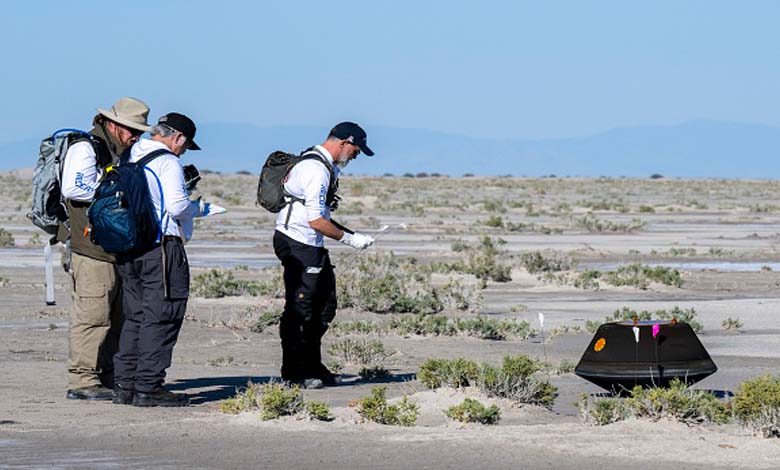Arrival of NASA’s First Sample Collected from an Asteroid to Utah

A capsule belonging to the United States’ National Aeronautics and Space Administration (NASA) pierced the Earth’s atmosphere and landed in the desert of the U.S. state of Utah on Sunday, carrying the largest-ever sample of soil collected from an asteroid for scientific study.
The capsule separated from the robotic vehicle, Osiris-Rex, while the latter was passing at an altitude of 67,000 miles from Earth to touch down inside a designated landing area west of Salt Lake City in Utah’s testing and training range.
This landing, broadcasted by NASA in a live stream, marks the culmination of a six-year joint mission between the National Aeronautics and Space Administration and the University of Arizona.
This sample is the third to be transported from an asteroid to Earth for analysis, following similar missions by the Japanese space agency in 2010 and 2020. However, this sample is the largest ever collected.
Osiris-Rex collected its sample from the asteroid Bennu three years ago. Bennu is a small carbon-rich asteroid discovered in 1999 and is classified as a “near-Earth object” because it relatively closely approaches our planet every six years, though the chances of a collision are remote.
Bennu appears to be composed of a jumbled mass of rocks and is only 500 meters wide, making it small compared to the Chicxulub asteroid that struck Earth about 66 million years ago and led to the extinction of the dinosaurs.
The Osiris-Rex spacecraft was launched in September 2016 and reached Bennu in 2018. It spent about two years orbiting the asteroid before getting close enough to collect a sample from its surface using its robotic arm on October 20, 2020.
The spacecraft began its journey back to Earth, covering a distance of 1.2 billion miles, in May 2021, including two orbits around the Sun.
The Bennu sample is estimated to weigh around 250 grams, significantly surpassing the sample retrieved from the Ryugu asteroid in 2020, which was only 5 grams, and the minuscule sample brought from the Itokawa asteroid in 2010.
Once secured, the capsule will be transported by air to a “clean room” at the testing and training range in Utah for initial examination before being transferred to NASA‘s Johnson Space Center in Houston, where it will be divided into smaller samples for use by approximately 200 scientists in 60 labs around the world.












